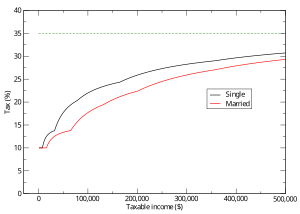
Image via Wikipedia
More inaccurate and misleading information about the Patient Protection Affordable Care Act.
Ye gads, there is enough that is real to worry about within PPACA, we don’t need e-mail idiots spreading false and misleading information. First rumor was that the value of health benefits is taxable next year because the amount will appear on the W-2 and now it is that you will incur a 3.8% tax when you sell your home.
Here is the text of one such misleading e-mail:
Under the new health care bill – did you know that all real estate transactions are now subject to a 3.8% Sales Tax? The bulk of these new taxes don’t kick in until 2013 (presumably after Obamas re-election).
You can thank Nancy, Harry and Barack and your local Democrat Congressman for this one. If you sell your $400,000 home, there will be a $15,200 tax. This bill is set to screw the retiring generation who often downsize their homes.
Is this Hope & Change great or what? We can vote the bums out in November and demand that they eliminate the bill or at the very least defund it. Then in 2012 repeal it.
Oh, you weren’t aware this was in the Obamacare bill? Guess what, you aren’t alone. There are more than a few congressman that aren’t aware of it either. AND, there are a few other surprises lurking.
Stay tuned.
Yes, the health care reform legislation does contain a new tax on unearned investment income. However, that tax applies to individuals who earn $250,000 or more ($200,000 for single individuals). Not a good thing mind you.
As you can see from the above e-mail, misinformation surrounds how the tax will apply to the sale of a home. For the tax to have any impact the$250,000 income threshold must be exceeded (that leaves out 95% of Americans). Then the tax would apply only to the taxable net profit from the sale of a home. For example, let’s say you bought a home for $150,000 twenty years ago and over the years you made improvements equal to $150,000 (new kitchen, new roof, etc.). Now your cost basis is $300,000. There is currently a $500,000 exclusion (married couple) for the taxability of profit on the sale of a home (if you lived in the house for a minimum period). So, in this example, you could sell the home for up to $800,000 and have no taxable profit and thus the 3.8% tax would not apply.
Beware what you read in global e-mails.
Here is what the law says”
‘‘CHAPTER 2A—UNEARNED INCOME MEDICARE CONTRIBUTION
‘‘Sec. 1411. Imposition of tax.
‘‘SEC. 1411. IMPOSITION OF TAX.
‘‘(a) IN GENERAL.—Except as provided in subsection (e)—
‘‘(1) APPLICATION TO INDIVIDUALS.—In the case of an individual, there is hereby imposed (in addition to any other tax imposed by this subtitle) for each taxable year a tax equal to 3.8 percent of the lesser of—
‘‘(A) net investment income for such taxable year, or ‘‘(B) the excess (if any) of—
‘‘(i) the modified adjusted gross income for such taxable year, over ‘‘(ii) the threshold amount.
‘‘(2) APPLICATION TO ESTATES AND TRUSTS.—In the case of an estate or trust, there is hereby imposed (in addition to any other tax imposed by this subtitle) for each taxable
year a tax of 3.8 percent of the lesser of—
‘‘(A) the undistributed net investment income for such taxable year, or
‘‘(B) the excess (if any) of—‘‘(i) the adjusted gross income (as defined in section 67(e)) for such taxable year, over ‘‘(ii) the dollar amount at which the highest tax bracket in section 1(e) begins for such taxable year.
‘‘(b) THRESHOLD AMOUNT.—For purposes of this chapter, the term ‘threshold amount’ means—
‘‘(1) in the case of a taxpayer making a joint return under section 6013 or a surviving spouse (as defined in section 2(a)), $250,000,
‘‘(2) in the case of a married taxpayer (as defined in section 7703) filing a separate return, 1⁄2 of the dollar amount determined under paragraph (1), and
‘‘(3) in any other case, $200,000.
‘‘(c) NET INVESTMENT INCOME.—For purposes of this chapter—
‘‘(1) IN GENERAL.—The term ‘net investment income’ means the excess (if any) of—
‘‘(A) the sum of—
‘‘(i) gross income from interest, dividends, annuities, royalties, and rents, other than such income which is derived in the ordinary course of a trade or business not described in paragraph (2),
‘‘(ii) other gross income derived from a trade or business described in paragraph (2), and
‘‘(iii) net gain (to the extent taken into account in computing taxable income) attributable to the disposition of property other than property held in a trade or business not described in paragraph (2), over
‘‘(B) the deductions allowed by this subtitle which are properly allocable to such gross income or net gain.
Here is a summary of the new tax prepared by the U.S. Chamber of Commerce:
Investment Tax
Perhaps less understood and not well known, the new tax on unearned income—known as the investment tax—is a massive revenue raiser that was added through the Reconciliation Act during the last week of consideration of the health reform package. Combined with the increase in the Medicare payroll tax, the provisions make up nearly half—$210.2 billion of $437.8 billion—of the increased taxes imposed by the bill. The 3.8% tax would be levied on individuals, estates, and trusts based on certain net investment income over a dollar threshold amount. The tax is applied to investment income net of any deductions allowed for the investment. For individuals, the tax is applied to the lesser of net investment income or modified AGI over a threshold amount ($200,000 individuals, $250,000 married filing joint return, or $125,000 married filing separate returns). Modified AGI is AGI plus any foreign income typically excluded under section 911 of the Internal Revenue Code. For an estate or trust, the tax is 3.8% of the lesser of undistributed net investment income or the excess of AGI over the dollar amount at which the highest income tax bracket applies. Net investment income includes gross income from interest, dividends, royalties, rents, and net capital gains. Investment income does not include interest on tax-exempt bonds, veterans’ benefits, excluded gain from the sale of a principle residence, distributions from retirement plans, or amounts subject to self-employment taxes.
The tax applies to taxable years beginning after December 31, 2012.










Recent Comments